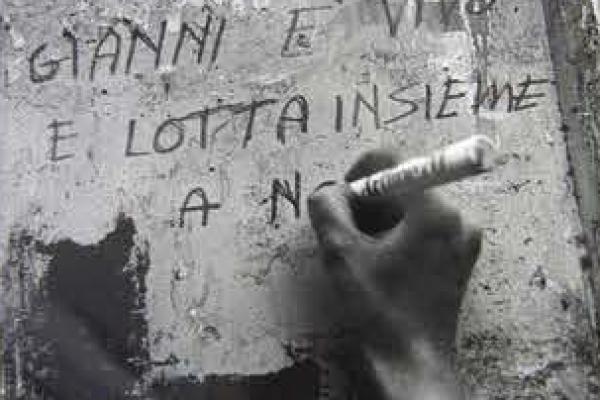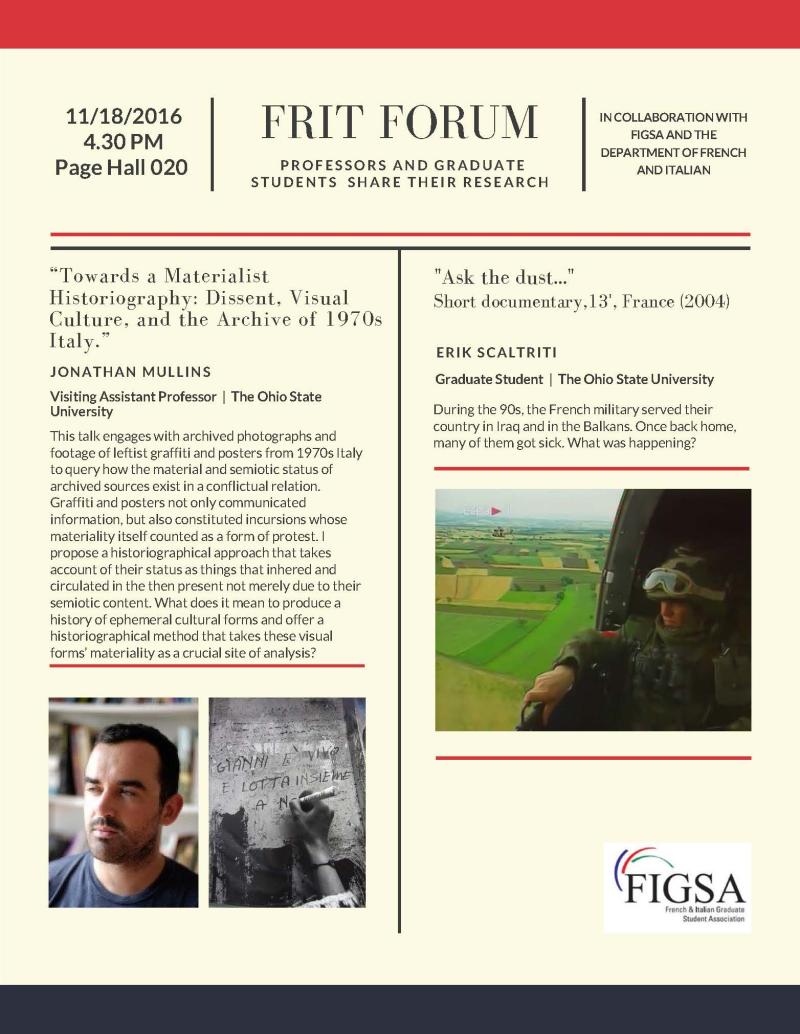
This paper engages with archived photographs and footage of leftist graffiti and posters from 1970s Italy to query how the material and semiotic status of archived sources exist in a conflictual relation, one that has complicated their uptake in historiographical debates about postwar leftist movements. This talk questions the manner in which graffiti and posters not only communicated information, but also constituted incursions whose materiality itself counted as a form of protest. I propose a historiographical approach that takes account of their status as things that inhered and circulated in the then present not merely due to their semiotic content, but also because of the way their material form striated and marked the built environment of urban space. I investigate what it means to produce a history of ephemeral cultural forms and offer a historiographical method that takes these visual forms’ materiality as a crucial site of analysis in order to shed new light on the operations of 1970s radical leftist dissent.
BIOGRAPHY
Jonathan Mullins is Visiting Assistant Professor at The Ohio State University. His research on film, politics, sexuality and 20th century cultural history has appeared in the Journal of Romance Studies and World Picture. He is currently preparing a book on the leftist creative production titled “Ephemeral Media, Everyday Dissent: Radical Leftism in 1970s Italy.”

